We are used to a wide range of customers calling us. We get customers who know exactly what they need, right down the part number. We also get customers who barely know one end of a tractor from the other. Both extremes, and everything in between, is completely ok. We all have to learn somewhere, and we have all been new to the vintage tractor world at some point. Helping all manner of customers is one of the best parts of the job.
One question that we often ask our customers when trying to visualise their tractor in our minds is ‘What cab have you got on your tractor?’ By answering this question, it can help us understand a lot about your tractor, and it helps us to get the right parts for your tractor, even though we cannot see the tractor down the phone.
While this may seem a very simple question it can be very confusing and often customers do not know, but I am hoping that this blog will help to show the different cabs and make it clear.
One cab, multiple names
One of the problems is that the cabs on the Leyland and Marshall tractors have got multiple names, and the names do not always reflect our thoughts on the cab.
Leyland rattle cab
Let’s start with the early Leyland tractors, such as those on the Leyland 344, Leyland 384, Leyland 253, Leyland 255, Leyland 270 tractor models. These models were either cab-less or were fitted with the optional standard cab, also known affectionately as the rattle cab. The easiest way to identify this cab is via by the back window. There is no back window, the cab is all open at the back and it has a roll down canvas to keep the worst of the elements off the driver.
This cab is affectionately known as the rattle cab as it is known for being quite a noisy cab as it is open at the back and the side windows rattle as the tractor goes along.
.jpg)
Here we have a picture of a Leyland 270 tractor – a picture which has been used in our calendars, so thank you to the owner for giving me permission to use the picture – which has the rattle cab on it.
You can see the door profile from this angle. The doors are quite flexible, and the frame is almost on the outside of the door with a raised profile around the outside of the door.
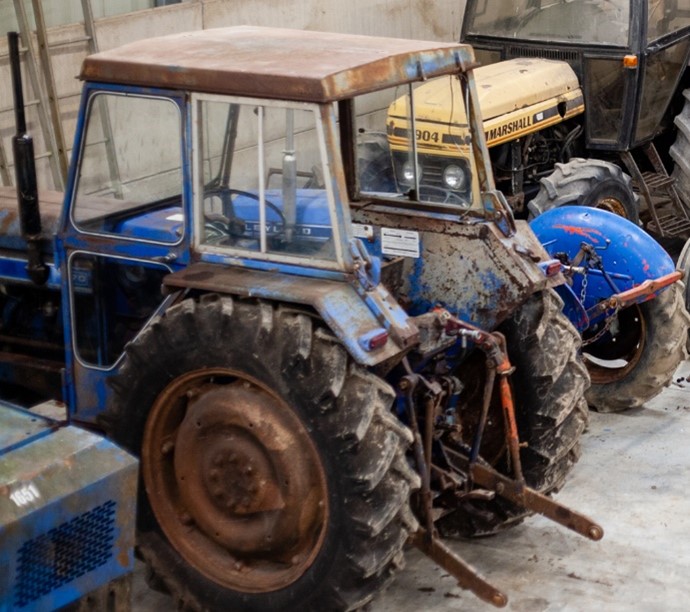
Here is the rattle cab from the back. This is the easiest way to identify a rattle cab. You can see that the back is all open and there should be a roll down canvas to cover the top of the hole and to keep the worst of the weather off the driver.
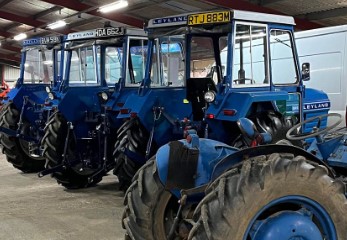
This is a line-up of rattle cab Leyland Tractors shown at the Newark Show, 2022. This shows the roll down canvases which are there as a back window. Here the canvas’ are rolled up out of the way on all three of the tractors, but they are a clear plastic sheet that when rolled down is attached by press-studs to keep it firmly attached.
Leyland quiet cab
The later Leyland 262, Leyland 272, Leyland 282 models, and the last of the Leyland 245 model tractors as well as the 4WD versions of these tractors were often QM models and were fitted with the Quiet cab. This improved cab had a proper metal framed back window, and was a much quieter cab, as the name suggests. This cab was closed at the back with a small viewing window at the bottom and the metal framed rear window, part number CTJ880, improving the comfort of the cab. The cab also had less flimsy doors, which aided in the comfort. These doors have a sturdier structure and fit better at the bottom of the cab, meaning greater comfort to the driver in these Leyland Quiet cab models.
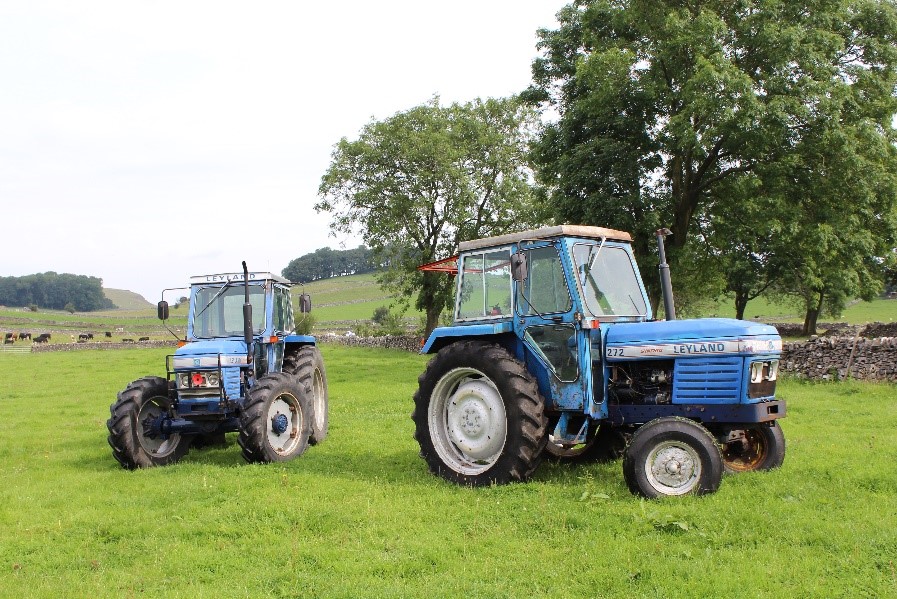
This picture shows the Leyland Quiet cab tractors – a 272 and the four-wheel drive version, the 472. You can see the difference in the door, with the outside of the door being virtually flat. You can also see the proper back window, which is propped open on the Leyland 272 tractor on the right hand side.
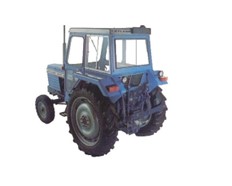
This picture shows the back of the Quiet cab and shows how it is enclosed at the back with a metal-framed window and lower sliding window too.
This is the easiest way to tell the difference between the rattle cab and the quiet cab.
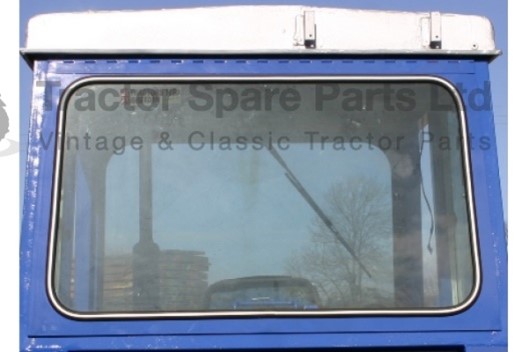
Note that this picture shows an early quiet cab which has glass with square corners. The later Quiet cab rear windows has rounded corners and a piano hinge across the top as in the second picture.
Marshall Explorer cab
The early Leyland Harvest Gold tractor had the Leyland Quiet cab on them. This cross-over period is full of unexpected change-points, so be careful if you are ordering parts for the Harvest Gold tractor badged as a Leyland. If you are unsure, just ask us and we can help you decide which parts you need.
When they were rebranded as Harvest Gold Marshall tractors, they were also fitted with the Explorer cab. This Explorer cab was made by Sekura, so it is also referred to as the Sekura cab. Sekura cab, Explorer cab – it is all the same thing! These Sekura Explorer cabs were the same as fitted to other brands, such as David Brown and Case tractors, but they had their differences!! We found this out when we sold some of the Marshall mudguards for David Brown tractors – they are different.
The Sekura Explorer cab on the Marshall tractors is again easily identified by its back window. The back window is a piece of glass with a rubber edging and hinges directly into the hole in the glass.
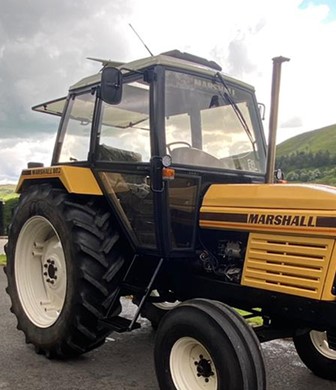
The Sekura Explorer cab also looks more bulbous than the Leyland tractor cabs. It is wider at the bottom of the windscreen than at the top by the roof or the bottom of the doors. The doors, therefore, are shaped rather than being relatively flat as on the Leyland cabs.
The roof is a different shape to the Leyland roofs and it also has the addition of a hatch in the top. It is known as the escape hatch, but sometimes called the sun roof. It can be propped open with the gas struts on either side of the hatch.
A picture shows 1000 words
I hope that this helps you identify which cab you have on your tractor. I do have a video on our You Tube channel showing a video of the different cabs, so go and check that out too - click here for our You Tube Channel.
Of course, if you are ever unsure about what you have or what you need, please get in touch. You can even send us a picture through the website and we can go from there.





